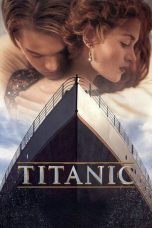- Source: Mutsuki-class destroyer
- Kapal perusak kelas Mutsuki
- Kapal perusak kelas Kagerō
- Kapal perusak Jepang Minazuki (1926)
- Mutsuki-class destroyer
- Japanese destroyer Mutsuki
- Japanese destroyer Kisaragi (1925)
- Kagerō-class destroyer
- Fubuki-class destroyer
- Japanese destroyer Nagatsuki (1926)
- Japanese destroyer Minazuki (1926)
- Japanese destroyer Kikuzuki (1926)
- Japanese destroyer Satsuki (1925)
- Kamikaze-class destroyer (1922)
White Bird (2023)
Aurora Teagarden Mysteries: A Lesson in Murder (2024)
Do Not Enter (2024)
Gridman Universe (2023)
Big Momma’s House 2 (2006)
No More Posts Available.
No more pages to load.
The Mutsuki-class destroyers (睦月型駆逐艦, Mutsukigata kuchikukan) were a class of twelve destroyers of the Imperial Japanese Navy. All were given traditional poetic names of the months of the year by the Lunar calendar or phases of the moon. Some authors consider the Kamikaze and Mutsuki-class destroyers to be extensions of the earlier Minekaze class.
Background
With the imposition of the Washington Naval Treaty limiting the number and size of capital warships, increased emphasis was placed by the Imperial Japanese Navy on the quantity and firepower of its destroyer fleet to counter what was perceived to be the growing threat from the United States Navy. The Mutsuki-class destroyers were an improved version of the Kamikaze class destroyers and were ordered under the 1923 fiscal budget.
Along with the Minekaze and Kamikaze classes, the Mutsuki-class ships formed the backbone of Japanese destroyer formations throughout the twenties and thirties. The Minekaze and Kamikaze classes were withdrawn from front line service and reassigned to secondary duties towards the end of the 1930s, but the Mutsukis were retained as first line destroyers due to their range and their more powerful torpedo armament. All saw combat during World War II, and none survived the war.
Initially, the Mutsuki-class ships had only hull numbers due to the projected large number of warships the Japanese navy expected to build through the Eight-eight fleet plan. This proved to be extremely unpopular with the crews and was a constant source of confusion in communications. In August 1928, names were assigned.
Design
The Mutsuki-class destroyers were based on the same hull design as the previous Kamikaze class, except with a double curvature configuration of the bow, a feature to improve seaworthiness which became a standard in all later Japanese destroyers.
The engines utilized four Kampon boilers running two-shaft geared turbines at 38,500 shp, yielding a rated speed of 37 knots (69 km/h), although subsequently modifications increased displacement, and correspondingly reduced speed to 33 knots.
After the Fourth Fleet Incident of September 1935, during which many ships in the Imperial Japanese Navy were damaged by a typhoon while on training exercises, weaknesses in the Mutsuki-class were addressed by retrofitting with a strengthened, more compact, bridge, with raked smokestacks, and with redesigned watertight shields on the torpedo mounts. With these new shields torpedoes could be worked in all weather conditions, thus extending the useful life of the class.
In 1942, Mikazuki had a boiler removed and her aft stack was reduced in size – she was the only ship of the class so modified. Yayoi had a similar reduction to her forward funnel; again, she was the only ship of the class so adapted. Between September 1942 and December 1943, Uzuki had her stern modified to facilitate the launching and recovery of landing barges. She was the only ship of the class to be modified as a destroyer transport.
= Armament
=The Mutsuki-class destroyers were built with the same main battery as the Kamikaze-class, consisting of four Type 3 120 mm 45 caliber naval guns in single open mounts, exposed to the weather except for a small shield. These were located one forward, two aft (placed back-to-back), and one amidships. There were also two Type 92 7.7 mm anti-aircraft machine guns, one on either side of the bridge. However, the main difference from the Kamikaze class was the use of two triple 24-inch (610 mm) torpedo tubes instead of the previous three double launchers. The newly developed Type 8 torpedoes had greater range and larger warhead than previous torpedoes in the Japanese inventory, but were soon superseded by the famous Type 93 "Long Lance" oxygen-propelled torpedoes during World War II. Also, for the first time on a Japanese destroyer, a reload was carried for each tube. The Mutsuki-class was also equipped with two Type 81 depth charge launchers in the stern, with a total of 18 depth charges.
After the start of the Pacific War, anti-aircraft capabilities were enhanced at the expense of surface warfare capabilities and speed. However, there was no standard modification for the class during the war. Some ships immediately received Type 93 13 mm AA Guns mounted in front of the bridge and abaft the aft stack. From 1941 to 1942, many ships lost one or two of their aft guns in favor of up to ten Type 96 25mm AA Guns.
Of the surviving members of the class in 1943, four had their aft bank of torpedo tubes removed to reduce weight and to permit storage of cargo. The three ships that survived into late 1944 (Uzuki, Satsuki, and Yūzuki), had their suite of anti-aircraft guns increased to 16 and 22 Type 96 guns in single and dual mounts. Satsuki was fitted with a Type 13 radar in February 1944.
Operational history
The Mutsuki class formed the 5th and 6th Destroyer Squadrons. Mutsuki and Kisaragi participated in the Battle of Wake Island at the start of the war, during which time Kisaragi was lost due to aircraft bombardment. The remaining eleven vessels participated in the invasions of the Philippines and Netherlands East Indies. In the subsequent Solomon Islands campaign surviving ships were exposed to considerable danger as fast transports in “Tokyo Express” missions in trying to re-supply island garrisons. Mutsuki, Kikuzuki, Mikazuki and Mochizuki were lost due to air attack in various battles in the Solomons.
Nagatsuki was fatally shot by a 6-inch (152 mm) waterline shell hit, curtesy of the light cruiser USS Honolulu and ran herself aground during the battle of Kula Gulf, 6 July 1943. She was deemed impossible to float and left as a wrecked hulk. Surviving vessels participated in the New Guinea campaign, mostly in the role of “Tokyo Express” transports. Yayoi was lost in an air attack off New Guinea and Fumizuki in Operation Hailstone at Truk. In the final stages of the war, Uzuki was lost to US PT-boats, Satsuki and Yūzuki to air attacks and Minazuki to submarine torpedoes in the Philippines.
None of the Mutsuki-class destroyers survived the war.
List of ships
References
= Notes
== Books
=Evans, David (1979). Kaigun: Strategy, Tactics, and Technology in the Imperial Japanese Navy, 1887-1941. US Naval Institute Press. ISBN 0-87021-192-7.
Brown, David (1990). Warship Losses of World War Two. Naval Institute Press. ISBN 1-55750-914-X.
Howarth, Stephen (1983). The Fighting Ships of the Rising Sun: The Drama of the Imperial Japanese Navy, 1895–1945. Atheneum. ISBN 0-689-11402-8.
Jentsura, Hansgeorg (1976). Warships of the Imperial Japanese Navy, 1869–1945. US Naval Institute Press. ISBN 0-87021-893-X.
Morison, Samuel Eliot (1958). The Struggle for Guadalcanal, August 1942 – February 1943, vol. 5 of History of United States Naval Operations in World War II. Boston: Little, Brown and Company. ISBN 0-316-58305-7.
Nelson, Andrew N. (1967). Japanese–English Character Dictionary. Tuttle. ISBN 0-8048-0408-7.
Watts, Anthony J (1967). Japanese Warships of World War II. Doubleday. ISBN 978-0-3850-9189-3.
Whitley, M J (2000). Destroyers of World War Two: An International Encyclopedia. London: Arms and Armour Press. ISBN 1-85409-521-8.
External links
Nishida, Hiroshi. "Materials of IJN: Mutsuki class destroyer". Imperial Japanese Navy. Archived from the original on 2012-07-21. Retrieved 2009-02-03.
Globalsecurity.org. "IJN Mutsuki class destroyers".
Jones, Daniel H. (2003). "IJN Minekaze, Kamikaze and Mutsuki class Destroyers". Ship Modeler's Mailing List (SMML). Archived from the original on 2008-08-28.














